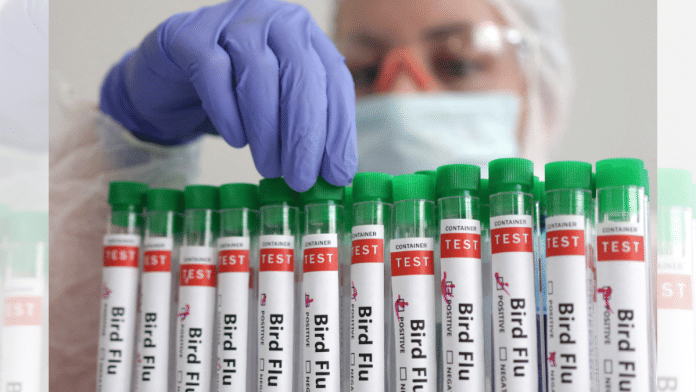New Delhi: Australia has confirmed its first human case of avian influenza A, saying the patient — a child — was infected in India in March.
This is the first confirmed human case of highly pathogenic avian influenza (HPAI) in Australia, and the first time the H5N1 strain has been detected in a person or animal in the country.
A health advisory issued by Victoria’s chief health officer, Dr Clare Looker, Tuesday said. “A case of avian influenza A (H5N1) infection, also known as ‘bird flu’, has been reported in Victoria. This is the first human case of H5N1 avian influenza in Australia. The case occurred in a child, who acquired the infection in India and was unwell in March 2024.”
According to the advisory, the avian influenza virus was detected through further testing of positive influenza samples that takes place to detect novel or concerning flu virus strains, as part of Victoria’s enhanced surveillance system.
The child experienced a severe infection but has made a full recovery, the advisory said, adding that contact tracing has not identified any further cases of avian influenza connected to this case.
However, it did not give more information about where the child had travelled in India, the age or gender or other details related to the illness.
In a response to ThePrint, the Union health ministry said it was in touch with the nodal person in the Australian government.
Growing reach of the deadly virus
Since 1996, bird flu viruses have been circulating among wild and domestic birds, first identified in China. On some occasions, these viruses infect humans who are in close contact with birds, with a fatality rate of over 50 percent, according to the World Health Organization (WHO).
But worryingly, the past two years have seen an increase in the frequency and spread of the virus among both birds and mammals.
According to the WHO, in 2022, 67 countries across five continents experienced outbreaks of H5N1 high pathogenicity avian influenza, resulting in the loss of over 131 million domestic poultry through death or culling.
In 2023, 14 additional countries, mainly in the Americas, reported outbreaks and mass fatalities in wild birds — attributed to influenza A (H5N1) clade 2.3.4.4b viruses.
Also read: Intensified surveillance, plan to test cattle — how India is building defence against bird flu
There have also been deadly outbreaks among mammals caused by influenza A(H5) viruses, with 10 countries across three continents reporting this since 2022.
Scientists are worried that the virus may combine with a human flu virus and mutate, which may make transmission between humans possible; the outbreaks could then turn into a mega pandemic.
This year, the US saw a widespread outbreak of the disease in dairy cows, and a case was also confirmed in a farm worker in Texas who later recovered from the infection.
In India this year so far, at least four cases of HPAI have been reported among poultry in Kerala, Maharashtra, Andhra Pradesh and Jharkhand, but there is no official word on whether mammals in close proximity to infected birds have been tested for the presence of the pathogen.
The only confirmed human case of bird flu was reported in India in 2021 in a 21-year-old boy from Haryana, who succumbed to the infection.
Some experts meanwhile expressed concern at the lack of efforts to keep proper vigilance on the outbreak in India. Genome scientist Dr Vinod Scaria said that without an active surveillance programme for H5N1 in India, for animals or humans, we are possibly missing a lot of cases.
‘The genomes from none of the 4 outbreaks are available in the public domain. We don’t even know the lineage of the virus and the mutation spectrum of the virus. It is high time we have a surveillance programme in animals and humans and a subset sequenced,” he stressed.
Scaria also pointed out that the genome from Victoria has been made available and is similar to the isolates from Bangladesh which are deposited in public domain. However comparison with the Indian outbreaks are not possible due to lack of data, he said.
(Edited by Tikli Basu)
Also read:Why regular, updated dietary guidelines are important as non-communicable diseases rise in India






